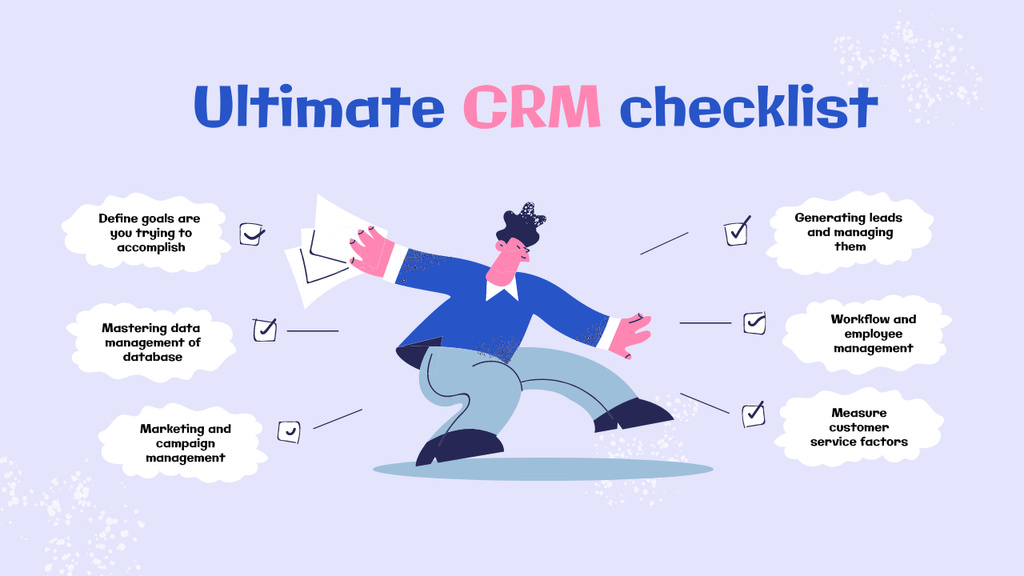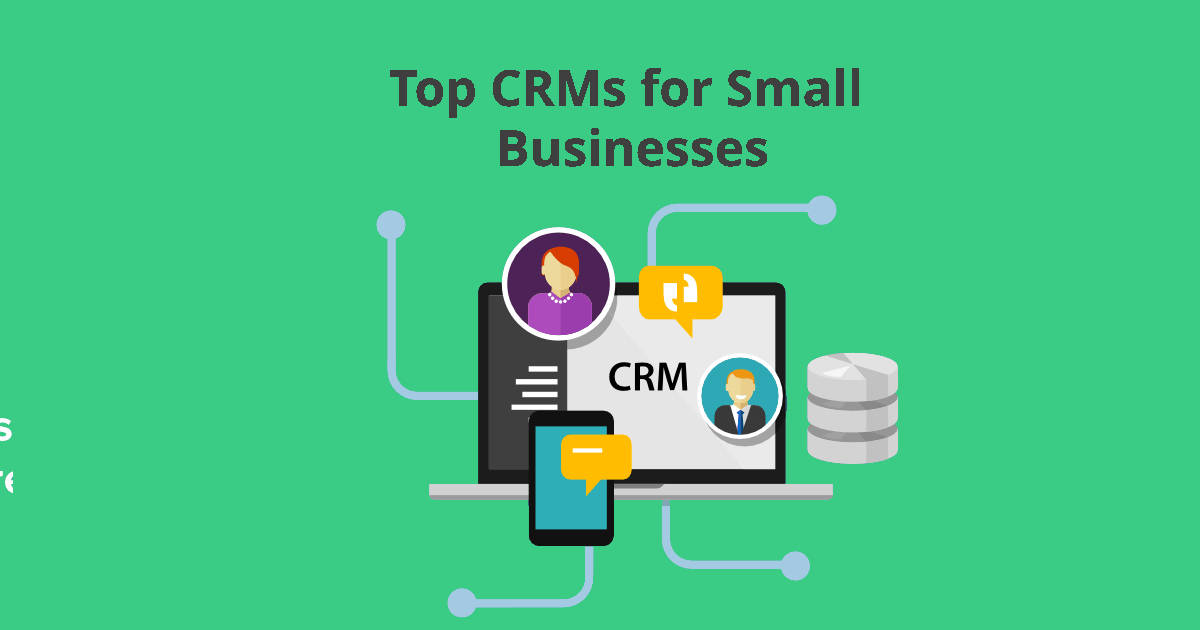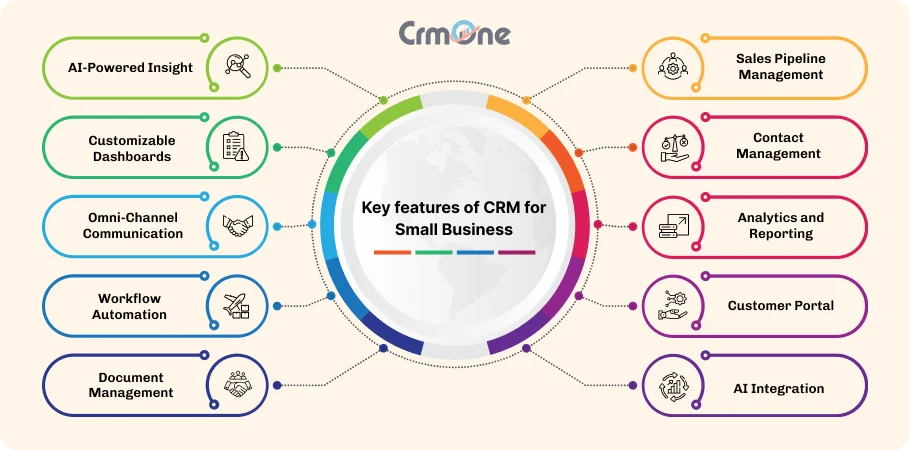Small Business CRM Checklist: Your Ultimate Guide to Choosing and Implementing the Right CRM

Small Business CRM Checklist: Your Ultimate Guide
Running a small business is a whirlwind of activity. You’re juggling everything from marketing and sales to customer service and operations. In the midst of this chaos, it’s easy for things to fall through the cracks. That’s where a Customer Relationship Management (CRM) system comes in. A CRM acts as your central hub for all customer-related information, helping you streamline processes, improve customer relationships, and ultimately, boost your bottom line. But choosing and implementing a CRM can feel like a daunting task. Where do you even begin? This comprehensive checklist is designed to guide you through the entire process, from evaluating your needs to getting your CRM up and running.
What is a CRM? Why Does Your Small Business Need One?
Before we dive into the checklist, let’s quickly recap what a CRM is and why it’s so crucial for small businesses. A CRM is essentially a software solution that helps you manage your interactions with current and potential customers. It’s a central database where you store all customer information, including contact details, purchase history, communication logs, and more. Think of it as a digital filing cabinet for all things customer-related.
Here’s why your small business desperately needs a CRM:
- Improved Customer Relationships: A CRM provides a 360-degree view of your customers, allowing you to personalize your interactions and build stronger relationships.
- Increased Sales: By tracking leads, managing the sales pipeline, and automating tasks, a CRM helps you close more deals and increase revenue.
- Enhanced Efficiency: CRM systems automate repetitive tasks, freeing up your time to focus on more strategic activities.
- Better Organization: A CRM keeps all your customer data organized in one place, eliminating the need for spreadsheets and scattered information.
- Data-Driven Decision Making: CRM systems provide valuable insights into customer behavior, allowing you to make informed decisions about your business.
Phase 1: Assessing Your Needs and Defining Goals
Before you even start looking at CRM options, you need to understand your business’s specific needs and goals. This initial assessment is crucial for choosing the right CRM and ensuring a successful implementation. Here’s what you need to consider:
1. Identify Your Business Goals
What do you hope to achieve with a CRM? Are you looking to:
- Increase sales?
- Improve customer retention?
- Streamline marketing efforts?
- Enhance customer service?
- Gain better insights into customer behavior?
Clearly defining your goals will help you prioritize features and functionality during the selection process.
2. Analyze Your Current Processes
Take a close look at your existing customer-related processes. How do you currently manage leads, sales, customer service, and marketing? Identify areas where you can improve efficiency and streamline workflows. Consider the following questions:
- How do you track leads?
- How do you manage your sales pipeline?
- How do you handle customer inquiries?
- How do you communicate with customers?
- What tools are you currently using (e.g., spreadsheets, email, etc.)?
3. Define Your Ideal Customer Profile (ICP)
Who are your ideal customers? Understanding your ICP will help you tailor your CRM strategy and personalize your interactions. Consider the following:
- Demographics (age, location, income, etc.)
- Psychographics (interests, values, lifestyle, etc.)
- Behavior (buying habits, online activity, etc.)
- Pain points (what problems are they trying to solve?)
4. Determine Your Budget
CRM systems come in various price ranges, from free to enterprise-level solutions. Determine how much you’re willing to spend on a CRM, including software costs, implementation fees, training, and ongoing maintenance. Consider both the initial investment and the long-term costs.
5. Identify Key Stakeholders
Who will be using the CRM? Identify the key stakeholders in your organization, including sales, marketing, customer service, and management. Involve them in the decision-making process to ensure the CRM meets their needs and that they’re invested in its success.
Phase 2: Researching and Evaluating CRM Options
Once you have a clear understanding of your needs and goals, it’s time to start researching and evaluating CRM options. This phase involves comparing different solutions, assessing their features, and determining which one is the best fit for your business. Here’s a detailed checklist to guide you:
1. Research CRM Vendors
Start by researching different CRM vendors. There are countless options available, so it’s important to narrow down your choices based on your needs and budget. Consider the following:
- Popular CRM Platforms: Research well-known CRM platforms like HubSpot CRM, Salesforce Sales Cloud, Zoho CRM, Pipedrive, Freshsales, and Microsoft Dynamics 365.
- Industry-Specific CRM: If you operate in a specific industry (e.g., real estate, healthcare), research CRM solutions specifically designed for your industry.
- Reviews and Ratings: Read reviews and ratings from other small businesses to get insights into the pros and cons of each CRM.
- Free Trials and Demos: Take advantage of free trials and demos to test out different CRM solutions and see how they work.
2. Evaluate Key Features
Assess the key features offered by each CRM and determine if they align with your needs. Consider the following features:
- Contact Management: Ability to store and manage contact information, including names, addresses, phone numbers, and email addresses.
- Lead Management: Tools for capturing, tracking, and nurturing leads.
- Sales Automation: Features for automating sales tasks, such as email follow-ups and appointment scheduling.
- Sales Pipeline Management: Visual representation of your sales pipeline, allowing you to track deals and identify bottlenecks.
- Marketing Automation: Tools for automating marketing tasks, such as email campaigns and social media posting.
- Customer Service Management: Features for managing customer inquiries, resolving issues, and providing support.
- Reporting and Analytics: Ability to generate reports and analyze data to gain insights into customer behavior and sales performance.
- Integrations: Compatibility with other tools you use, such as email marketing platforms, accounting software, and social media platforms.
- Mobile Accessibility: Ability to access the CRM from mobile devices.
- Customization: Ability to customize the CRM to fit your specific needs.
3. Assess Scalability
Choose a CRM that can grow with your business. Consider the following:
- Number of Users: Ensure the CRM can accommodate your current and future number of users.
- Data Storage: Check the data storage limits and whether they meet your needs.
- Feature Expansion: Can you add more features as your business grows?
4. Evaluate User-Friendliness
The CRM should be easy to use and intuitive. Consider the following:
- User Interface: Is the interface clean and easy to navigate?
- Ease of Use: How easy is it to learn and use the CRM?
- Training and Support: Does the vendor offer training and support?
5. Consider Integration Capabilities
A CRM’s ability to integrate with other tools is crucial for streamlining your workflows. Consider the following:
- Email Marketing Platforms: Integration with email marketing platforms like Mailchimp, Constant Contact, or Sendinblue.
- Accounting Software: Integration with accounting software like QuickBooks or Xero.
- Social Media Platforms: Integration with social media platforms like Facebook, Twitter, and LinkedIn.
- Other Business Tools: Integration with other tools you use, such as project management software or e-commerce platforms.
6. Review Pricing and Licensing
Understand the pricing structure and licensing options for each CRM. Consider the following:
- Subscription Costs: What are the monthly or annual subscription costs?
- User-Based Pricing: How is pricing determined (e.g., per user, per feature)?
- Hidden Costs: Are there any hidden costs, such as implementation fees or training costs?
- Free Plans: Does the CRM offer a free plan or a free trial?
7. Check Security and Compliance
Ensure the CRM offers robust security features and complies with relevant regulations, such as GDPR and CCPA. Consider the following:
- Data Encryption: Does the CRM encrypt your data to protect it from unauthorized access?
- Data Backup: Does the CRM offer data backup and recovery options?
- Compliance: Does the CRM comply with relevant data privacy regulations?
Phase 3: Choosing and Implementing Your CRM
After evaluating your options, it’s time to choose the right CRM for your small business and start the implementation process. This phase involves selecting a CRM, planning the implementation, migrating your data, and training your team. Here’s a detailed checklist:
1. Select Your CRM
Based on your research and evaluation, choose the CRM that best fits your needs and budget. Carefully consider the following:
- Features: Does the CRM offer the features you need?
- Ease of Use: Is the CRM user-friendly and intuitive?
- Pricing: Is the pricing affordable and transparent?
- Support: Does the vendor offer adequate support?
- Reviews: What do other users say about the CRM?
2. Plan Your Implementation
Develop a detailed implementation plan to ensure a smooth transition. Consider the following:
- Timeline: Create a timeline for the implementation process.
- Resources: Identify the resources you’ll need, such as staff, budget, and technical support.
- Data Migration: Plan how you’ll migrate your data from your existing systems to the new CRM.
- Training: Plan for training your team on how to use the CRM.
3. Migrate Your Data
Migrating your data from your existing systems to the new CRM can be a complex process. Take the following steps:
- Data Cleanup: Clean up your data to ensure accuracy and consistency.
- Data Mapping: Map your data fields to the corresponding fields in the new CRM.
- Data Import: Import your data into the new CRM.
- Data Verification: Verify that the data has been imported correctly.
4. Customize Your CRM
Customize the CRM to fit your specific needs. Consider the following:
- Custom Fields: Add custom fields to store specific information about your customers.
- Workflows: Create workflows to automate tasks and streamline processes.
- Dashboards: Customize dashboards to display the information most important to you.
- Reports: Create custom reports to track key metrics.
5. Train Your Team
Provide adequate training to your team on how to use the CRM. Consider the following:
- Training Materials: Develop training materials, such as user manuals and video tutorials.
- Training Sessions: Conduct training sessions for your team.
- Ongoing Support: Provide ongoing support to help your team use the CRM effectively.
6. Test and Refine
Test the CRM thoroughly before going live. Identify any issues and make adjustments as needed. Consider the following:
- User Acceptance Testing (UAT): Have your team test the CRM to ensure it meets their needs.
- Bug Fixes: Fix any bugs or issues that are identified.
- Refinement: Refine the CRM based on feedback from your team.
7. Go Live and Monitor
Once you’re satisfied with the testing and refinement, go live with the CRM. Monitor the system closely and make adjustments as needed. Consider the following:
- Go-Live Date: Set a go-live date.
- Communication: Communicate the go-live date to your team.
- Monitoring: Monitor the system for any issues.
- Support: Provide ongoing support to your team.
Phase 4: Maximizing CRM Usage and Ongoing Optimization
Congratulations! You’ve successfully implemented your CRM. But the journey doesn’t end there. To get the most out of your CRM, you need to continuously maximize its usage and optimize your processes. Here’s what you need to do:
1. Encourage CRM Adoption
Make sure your team is actively using the CRM. Encourage adoption by:
- Leading by Example: Managers should use the CRM consistently.
- Providing Training: Offer ongoing training and support.
- Highlighting Benefits: Emphasize the benefits of using the CRM.
- Gamification: Use gamification to motivate your team.
2. Regularly Update Data
Keep your data up-to-date to ensure accuracy and relevance. Regularly update contact information, purchase history, and other customer data. Establish a process for data entry and maintenance.
3. Leverage Automation
Take advantage of the CRM’s automation features to streamline your processes. Automate tasks such as:
- Email Marketing: Automate email campaigns.
- Lead Nurturing: Automate lead nurturing workflows.
- Sales Follow-Ups: Automate sales follow-up tasks.
- Task Creation: Automate the creation of tasks.
4. Track Key Metrics
Track key metrics to measure the effectiveness of your CRM and identify areas for improvement. Some key metrics to track include:
- Sales Revenue: Track sales revenue generated through the CRM.
- Lead Conversion Rate: Track the rate at which leads convert into customers.
- Customer Retention Rate: Track the rate at which you retain customers.
- Customer Satisfaction: Measure customer satisfaction.
- Customer Lifetime Value (CLTV): Calculate the CLTV of your customers.
5. Analyze and Optimize
Regularly analyze your CRM data and identify areas for improvement. Optimize your processes and workflows based on your findings. Consider the following:
- Review Reports: Regularly review your CRM reports.
- Identify Trends: Identify trends in your data.
- Make Adjustments: Make adjustments to your processes and workflows as needed.
- Seek Feedback: Seek feedback from your team.
6. Integrate with Other Tools
Integrate your CRM with other tools to streamline your workflows and improve efficiency. Integrate with tools such as:
- Email Marketing Platforms: Integrate with email marketing platforms.
- Accounting Software: Integrate with accounting software.
- Social Media Platforms: Integrate with social media platforms.
- Other Business Tools: Integrate with other business tools.
7. Stay Up-to-Date
CRM technology is constantly evolving. Stay up-to-date on the latest features and updates. Consider the following:
- Vendor Updates: Stay informed about vendor updates.
- Industry Trends: Stay informed about industry trends.
- Training: Attend training sessions and webinars.
Conclusion: Your CRM Journey to Success
Implementing a CRM for your small business is an investment that can yield significant returns. By following this checklist, you can choose the right CRM, implement it successfully, and maximize its usage to improve customer relationships, increase sales, and boost your bottom line. Remember that the CRM journey is an ongoing process. Continuously assess your needs, optimize your processes, and stay up-to-date on the latest technology to ensure your CRM continues to serve your business effectively. Embrace the power of a well-implemented CRM and watch your small business thrive. Good luck, and happy CRM-ing!



